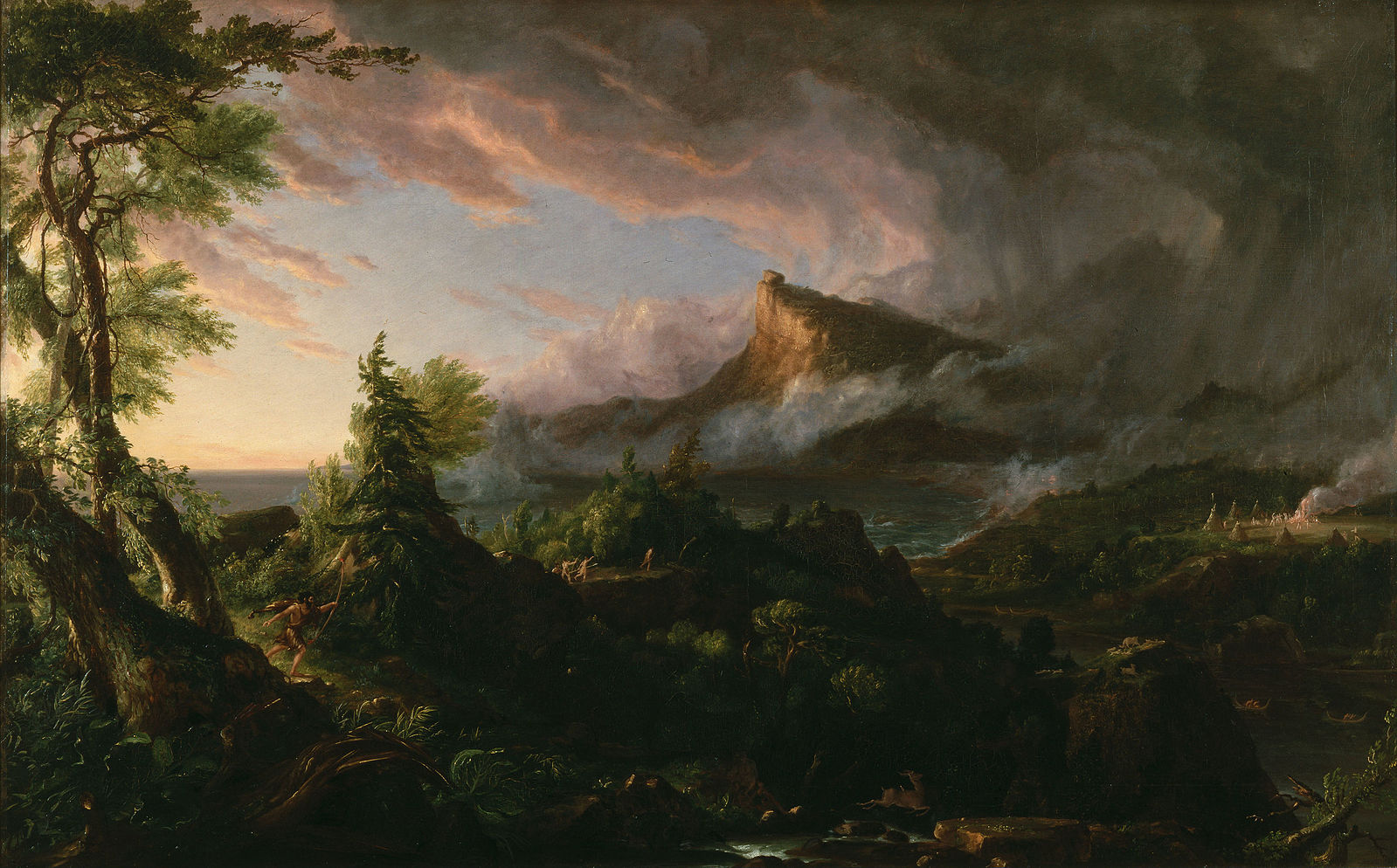
Thomas Coles, 1834
Prior to the Erie Canal, land and water transportation were inefficient and labor intensive. During the 1700s and early 1800s, people traveled on land by foot, on horseback, or in carriages or wagons if wealthy enough.
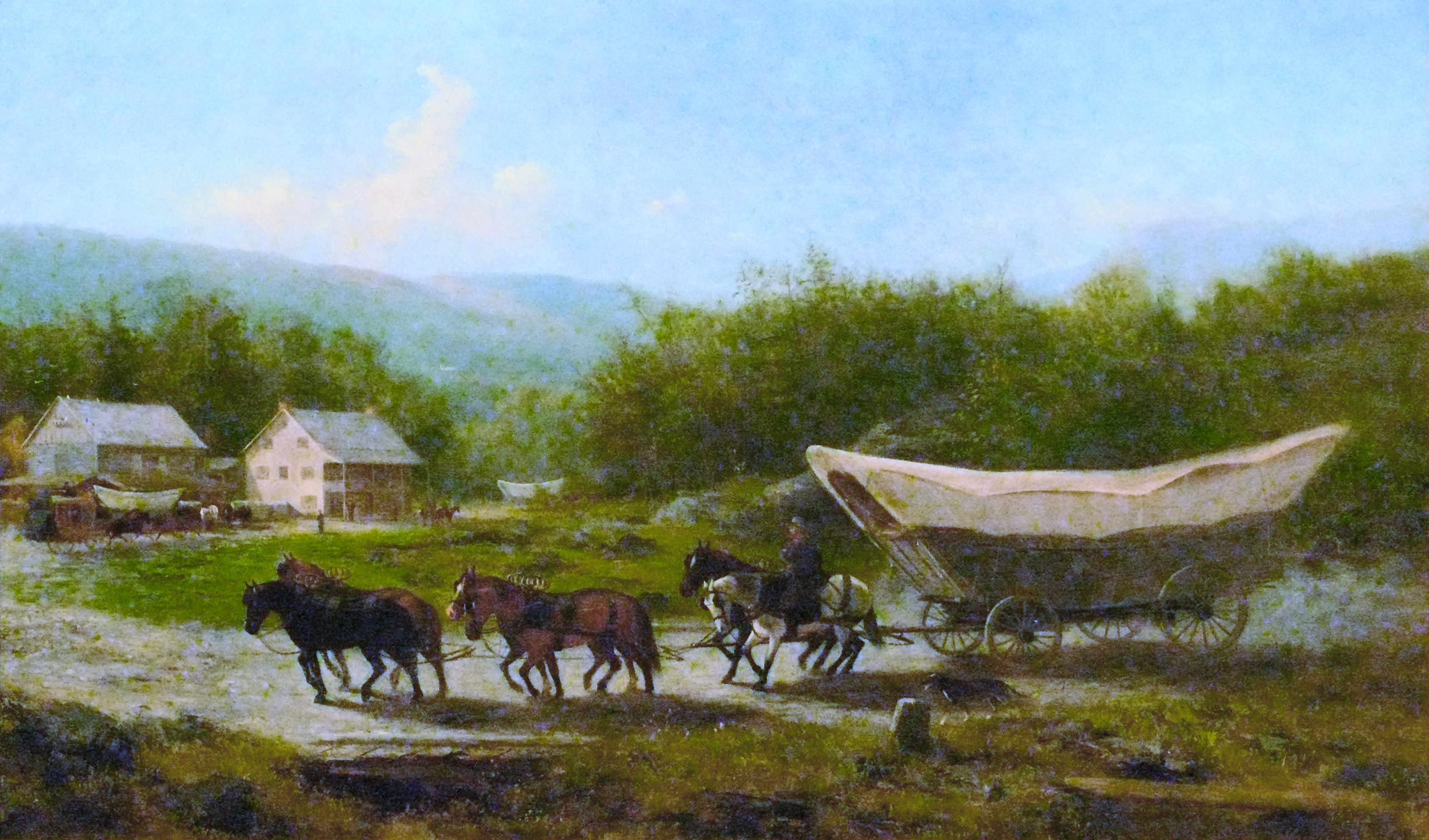
Conestoga Wagons were the primary mode of transportation for those traveling West despite scarce trails and poor conditions. [ConstitutionFacts.com]

Thomas Coles, 1834
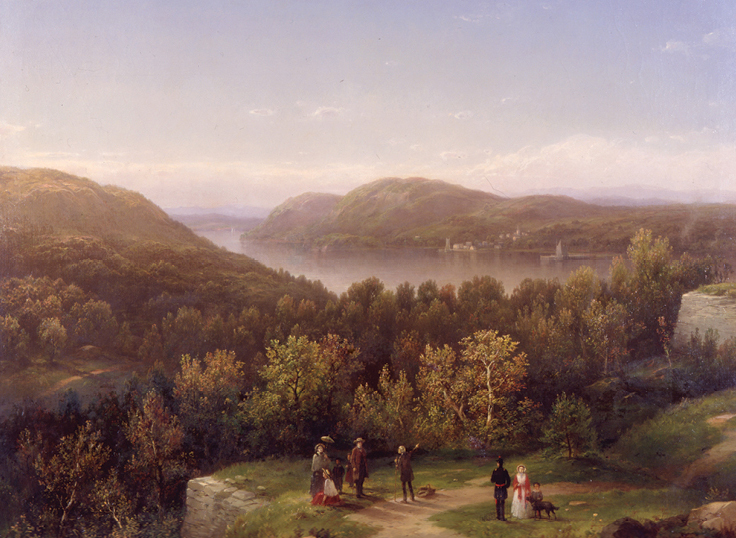
-George Henry Boughton, 1855.
Paintings from the Hudson River School dipicting the rugged wilderness [New York Historical Society Museum & Library and Fine Art Connoisseur]
When traveling on rivers or in backcountry, most people used light, flat-bottomed riverboats (bateaux), canoes, and rafts. Wooden, flat-bottomed freight boats (Durham boats) plied the few short-lived canals already existing in the U.S. Steamboats were in their infancy when creation of the Erie Canal began. Instead, larger sailing craft such as brigs, sloops, and schooners were used to navigate the Great Lakes.
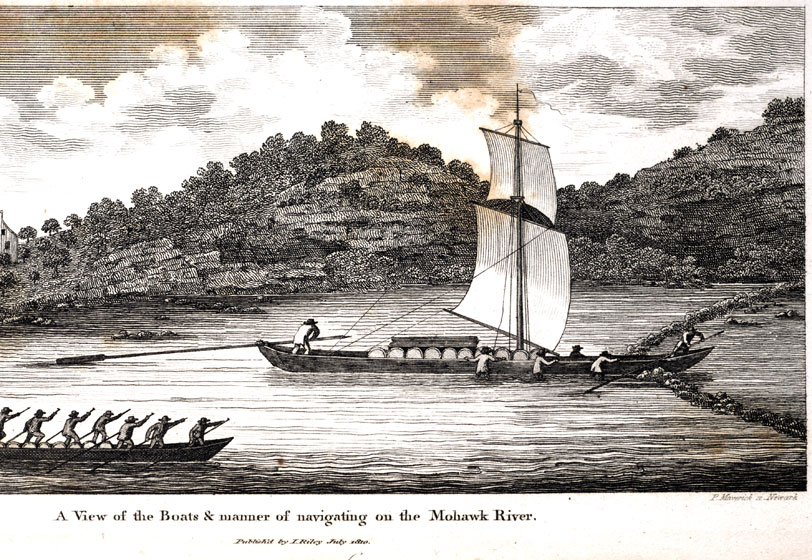
A Durham boat on the Mowhawk River (1808) [Wikipedia]
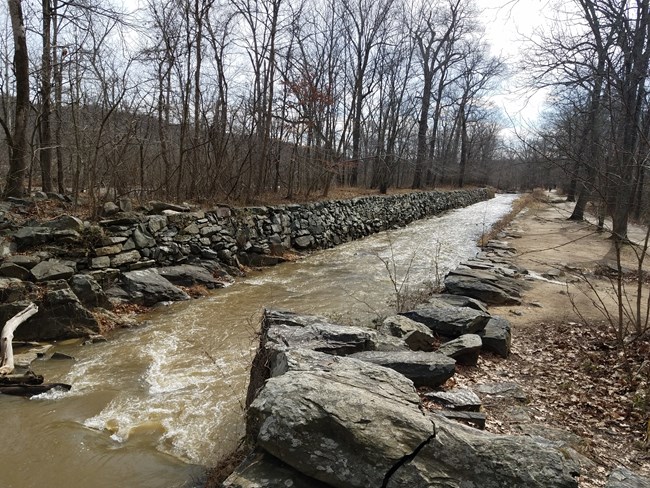
George Washington helped create one of the first canals along the Potomac River [National Park Service]